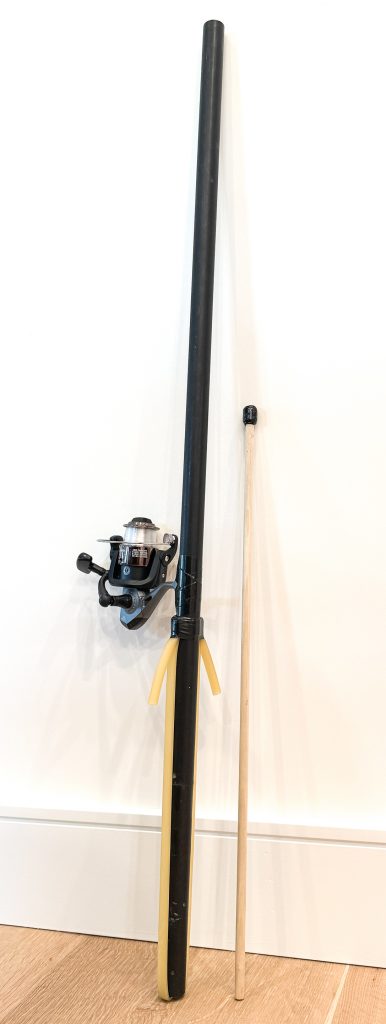Several weeks ago, a massive tree limb fell on top of and destroyed our neighbor’s sunroom. This happened during the same windstorm that took down several of our trees. Today, their new sunroom was flown into place, literally. I decided to capture the event with my drone and got a pretty decent result until I flew it into a tree. As determined by laser measurement, the drone was stranded 44 feet above the ground on top of a large limb. Retrieving it occupied the better part of my afternoon. I fashioned a harpoon from a steel tube I had lying around. To this, I added a cheap ($19) fishing reel and a 3-foot length of surgical tubing. I used a 24-inch long dowel rod as a harpoon with fishing line taped to one end. Recovering the drone was a three-phase operation. Phase 1: Send the harpoon over a dead branch and pull it down for a clear shot at the limb on which the drone is stranded. Phase 2: Send the harpoon over the branch holding the drone. Use the fishing line to pull a light-weight cord over the limb. Use that cord to pull a large rope up and over. Phase 3: Rhythmically pull on the rope to get the branch swaying until the drone becomes dislodged. It took about 5 attempts on each branch to get the needed harpoon trajectory. Retrieving the harpoon on failed attempts was time consuming because I was firing from the edge of a steep bank. When I finally liberated the drone, it landed just two feet from the river on its muddy bank. This proved to be quite fortunate from an impact perspective but I had to crawl on my belly through the underbrush to reach it. Neither the snake or snapping turtle that I imagined would bite me ever showed up. After cleaning off the mud, the drone checked out fine and I will be more mindful in the future when flying close to trees.

